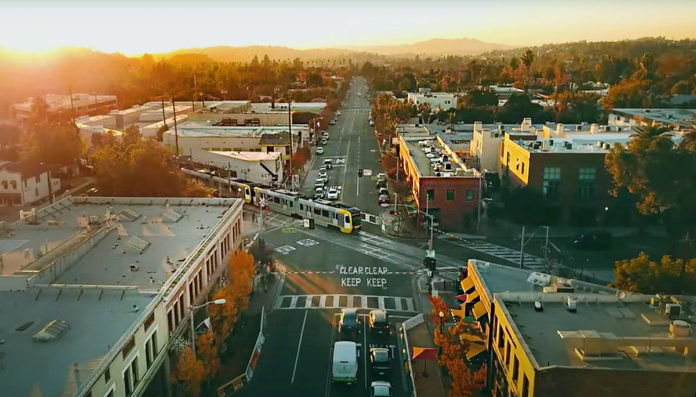
The South Pasadena City Council last week adopted a $31.9 million balanced general fund budget that restores services and programs suspended due to COVID-19; sets aside $200,000 in the police budget for a “crisis management response team”; punts on public demand to restore library staffing; and adopts “significant” revisions to financial policies aimed at preventing repetition of the accounting chaos that resulted last year after citizen scrutiny of its finances forced the city to detail what it described as a series of “historical accounting deficiencies.”
The updated policies, which were the principal focus of an ad hoc Council Subcommittee charged last year at the behest of former City Council Member Stephen Rossi, as well as by city’s standing Finance Commission, “provide for additional oversight, specify deadlines and enhance our financial transparency,” said City Manager Arminé Chaparyan, in her first budget presentation since taking over the job this month. Staff will prepare a mid-year budget update as well as quarterly financial reports, she emphasized, and there will be “continued improvements in providing expenditure details” in budget documents.
The budget includes $1.85 million for the library, an increase of 18 percent, mostly due to increases in senior, youth, and recreation services spending. Many library advocates complained that the city did not agree to the library’s request for a new full-time position to focus on technology services.
Library Director Cathy Billings said the city instead opted to provide an extra $64,000 to the library’s part time worker budget, and believes that during the mid-year budget review, after the city completes its strategic plan update, it will “revisit” the question of another full-time position. “It’s not a solution” to the technical capacity problem, she said, “but having these part-time funds will allow us to keep the library open 7 days a week” and free up some hours to help with technical projects. Funds for a consultant on the library’s 5-year strategic plan were also allocated.
The police department budget will experience a small, 0.22 percent decrease in 2021-22 to $9,892,684, and have 51 full time and 6 part time employees. In a cost-cutting move, two positions, deputy chief and one police officer, have been “frozen.”
The police budget includes $130,000 for the potential 5-year lease of 10 “green, environmentally friendlier police vehicles.” The department has 22 vehicles with an average age of 12 years and 75,000 miles, Chief Brian Solinsky told the Council. If the green vehicle program is successful, the existing fleet would be auctioned off with proceeds used to offset the program, which he said will “dramatically reduce” the department’s maintenance and fuel costs, as well as the city’s carbon footprint. It currently costs about $100,000 to purchase two police vehicles, he said. More details on the plan are forthcoming, he added.
Council Member Michael Cacciotti said many jurisdictions are looking at similar programs that offer considerable savings but said the department should focus on all electric vehicles, not hybrids, which he called “obsolete.” He also asked Solinsky to consider replacing all vehicles, not just the 10 called for under the current line item. South Pasadena could be “the first police department in Southern California to go electric,” he noted.
The SPPD budget also sets aside $200,000 for a “crisis management response team” (CMRT), the exact structure of which remains to be determined. The CMRT may take the form of the CAHOOTs program model of Eugene, Oregon advocated by the Care First South Pasadena group.
Solinsky, in his first budget presentation as chief, emphasized the line item is “good faith” money set aside for a program “that is not yet in place.” He said the department is working with the San Gabriel Valley Council of Governments on a report — now not expected before December — aimed at determining how much each of the seven participating SGVCOG member jurisdictions would have to spend to participate. Until those figures are known, it is uncertain how many will actually sign up.
Mayor Diana Mahmud and Council Member Michael Cacciotti asked the chief to actively look into the County’s Department of Mental Health’s prospective expansion of its Psychiatric Response Team, which may soon be available to other jurisdictions and include subsidies of $150,000 per jurisdiction.
The budget does not make recommendations for the allocation of the one-time $4.37 million the city received last year for leasing its cell towers, or for the federal COVID-19 relief funds to be provided under the American Recover Plan Act, currently estimated to total $6 million. The former has no restrictions while ARPA funds, under the current interim rule, can be used only for public health, economic hardship, revenue loss, premium pay, and water/sewer/broadband infrastructure.
Interim Assistant City Manager Elaine Aguilar said the city plans to undertake a “comprehensive strategic planning process with a lot of public input” under which use of the cell tower and ARPA funds will be discussed. The schedule for that process has not yet been published.
Fiscal 2021-22 revenue is projected to come in at $31.95 million, compared to $35.1 million this year, mainly because the cell tower revenue was a one-time event. The city expects to receive $16.49 million in property tax, about $900,000 more than this year, while the increase in sales tax revenue will be marginal, up only about $25,000 to $4.84 million — due mostly to the anemic recovery of hotel and gas tax receipts. The Utility Users Tax, extended by voters last year, is expected to bring in $3.83 million.
As for expenses, the general fund budget is $31.82 million, an increase of almost one million dollars. Aguilar said that’s mainly because the city is pushing some funds over to fully implement an “internal service” account to fund general liability and workers comp insurance expenses.
The budget includes no funding for deferred maintenance or capital improvements, all of which is being funded exclusively from existing reserves. These include $4.2 million for streets and sidewalks; $1.67 million for water and sewer work; just under a half million dollars for facility and equipment replacement; and $130,000 for the police vehicle lease program.















.png)










